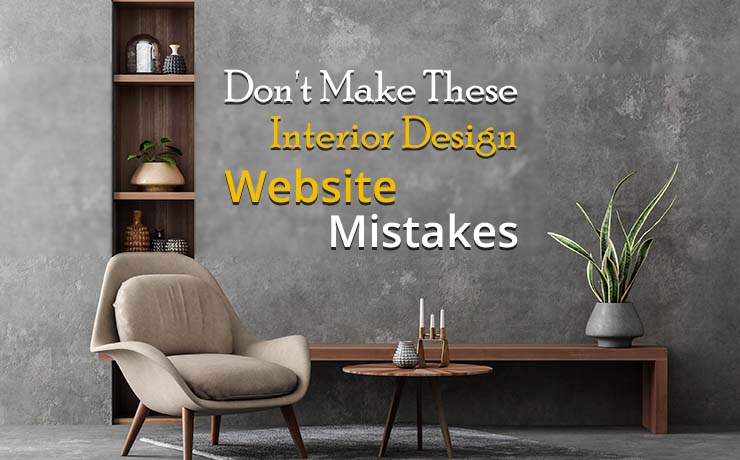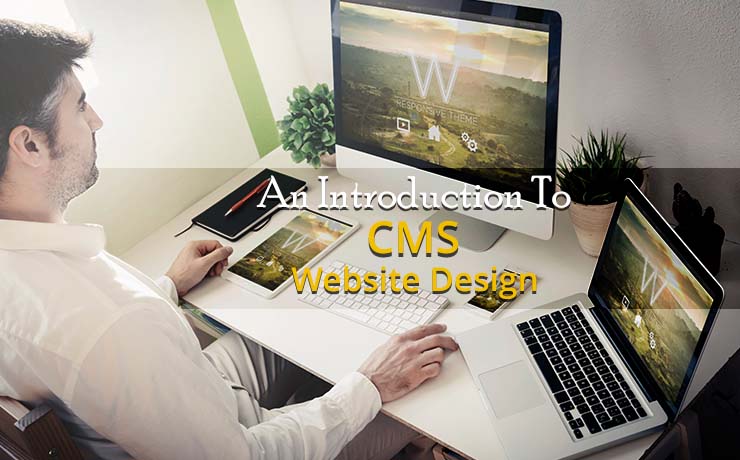Don’t Make These Interior Design Website Mistakes

Chad Faith
Director of Content

Although Instagram, Facebook, Houzz, and Pinterest and popular social media platforms in the interior design world, it is still important for designers to own a well-designed interior design website. Professional websites are essential for attracting and engaging with visitors, converting prospects to leads and leads to clients. An ineffective web design, however, can cost the business in terms of clients and leads. While it is true that people should not judge you based on your website design and development skills, they still expect to see a great looking design because YOU are an interior DESIGNER. So, what are the most common interior design website mistakes that repel clients and prevent service providers from having a thriving business? Read on to find out more!
The Overall Website Design is Subpar
Unfortunately, many customers hold interior designers to a high standard in terms of web design. Give it some thought. Will you hire a car mechanic who owns a beat-up car? Studies have shown that a significant portion of web design is associated with psychology. Today’s customers expect attention to detail when it comes to designing and building their dream properties. If the website leaves a bad taste in their mouths, the experience tells them that the interior designer does not pay attention and apparently do not care about design.
Most users expect a modern design and a predictable, clear menu structure that allows them to navigate where they want to go with ease. Recommended pages on the top menu should include Home, About Us, Services, Gallery, Testimonials, and Contact Us. In addition, the home page should articulate the interior designer’s unique value proposition (UVP) in a concise manner. It goes without saying that colors are important to interior designers and their websites. Because colors instill assumptions about the service provider and evoke emotion, choose them wisely!
Information Overload
In addition to design and site structure issues, visitors and potential leads may experience cognitive overload if too much information clutters the home page. Remember that most website visitors do not expect or want to see all of one’s information dumped on the home page. People do not generally read everything and will prefer to scan the available information instead. That’s why long walls of text should be broken into bullets points and extra line spaces should be added. Additional white spaces are also useful because they allow visitors to consume content without feeling overwhelmed. Alternatively, interior designers can also highlight interesting elements with icons and lines.
Before creating any content, interior designers should always be clear about their mission, passion, processes, and reasons on why they are different from competitors. Having a good business value proposition is being clear what one’s business is about.
If an interior design company wants to capture the attention of prospects, inspirational and engaging images should be uploaded to the website. This way, potential customers can visualize their dream homes and determine if you are the right team to hire.
One of the elements that interior design websites cannot live without is contact information. A business must always be easy to contact as visitors do not want to waste time hunting around for information. In addition to featuring it on the contact page, interior designers can also place their contact details on the top bar of the home page and inside the footer.
The Interior Design Website is Slow and Not Mobile Responsive
Slow-loading websites are major visitor deterrents. If a visitor must wait over 30 seconds for the website to load, chances are they will give up and abandon the site. This experience is going to create a bad impression, and from Google’s perspective, high abandon rates indicate that the search engine should not send the interior designer traffic due to poor design and functionality. One of the most common factors that affect website speed is image size. Always remember to resize or compress your images before uploading them to your website.
It is important to note that a high percentage of Internet searches were generated by mobile devices, e.g., smartphones. Interior designers should develop their websites to look great and function well on an array of screen sizes. This means that images, text, and logos must be clear and appropriately sized when viewed on a certain device.
Poor SEO – Website is Not Optimized for Google
If interior designers do not set up their SEO properly, Google and other major search engines will not know that they exist. If Google site crawlers fail to index the site, it cannot send traffic your way. Some of the attributes that Google refers to are page description, page title, and URL structure. These factors allow search engines to determine the relevancy of web pages according to a visitor’s search query. To improve one’s ranking in search engine results pages (SERPs), it is important to utilize titles that are descriptive and feature one’s target location. For example, Excellent Living Room Design Services in Chicago. It is important to note that interior designers should limit their page titles to 60 characters. Google truncates anything beyond that limit.
A good way to encourage visitors to click on your link is to write quality meta descriptions with call-to-actions. In addition to limiting the description to 160 characters, remember to include the main keywords once.
If business owners are considering creating one-page websites, it means that they have only one opportunity to define an effective description, URL, and title. Because these sites are not going to have enough content to get their prospects’ or Google’s attention, this option is not ideal for SEO. One-page websites, however, are great for link building. If you do not have experience in interior design website development, don’t worry; you do not need to go it alone. Hiring professionals can make things a whole lot easier for all parties!
 Free
Consultation
Free
Consultation Free
Google Ads Audit
Free
Google Ads Audit







